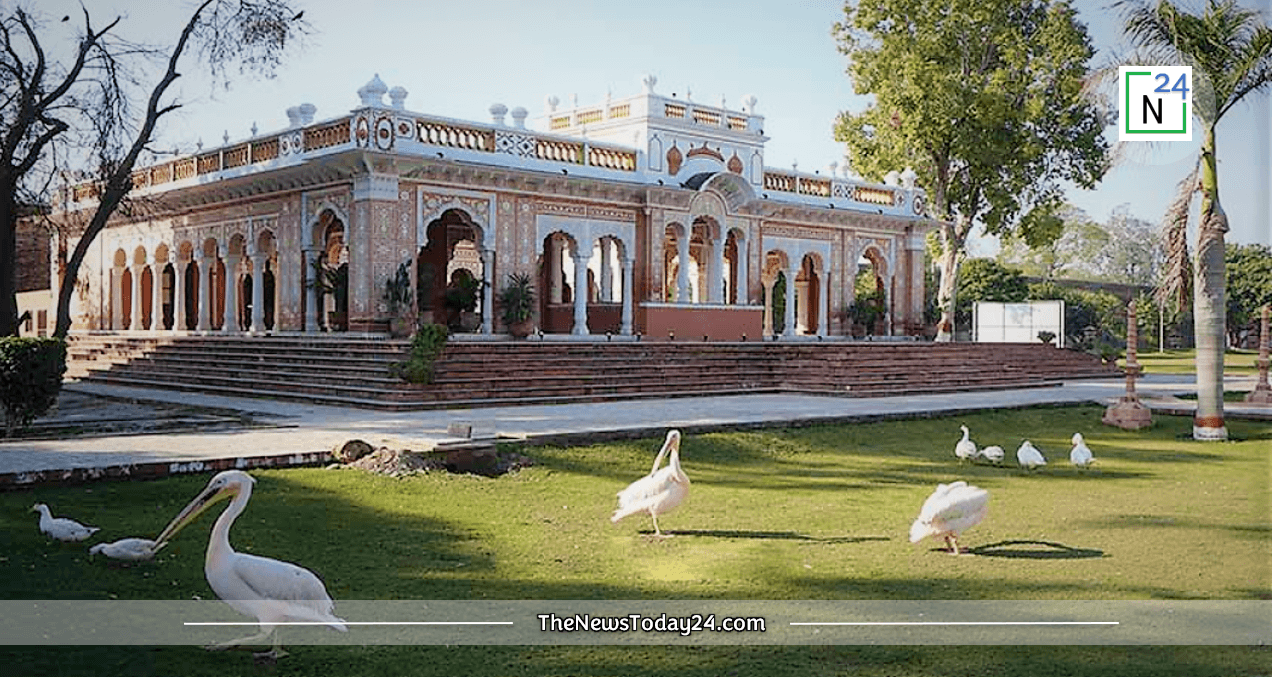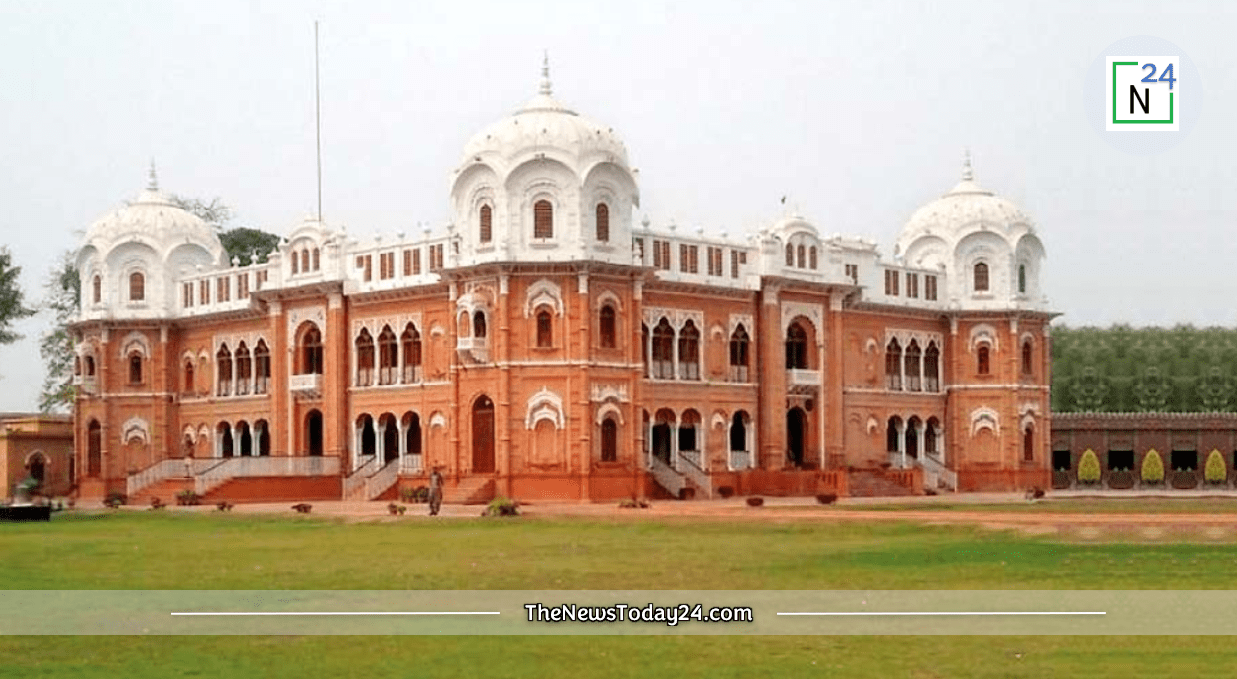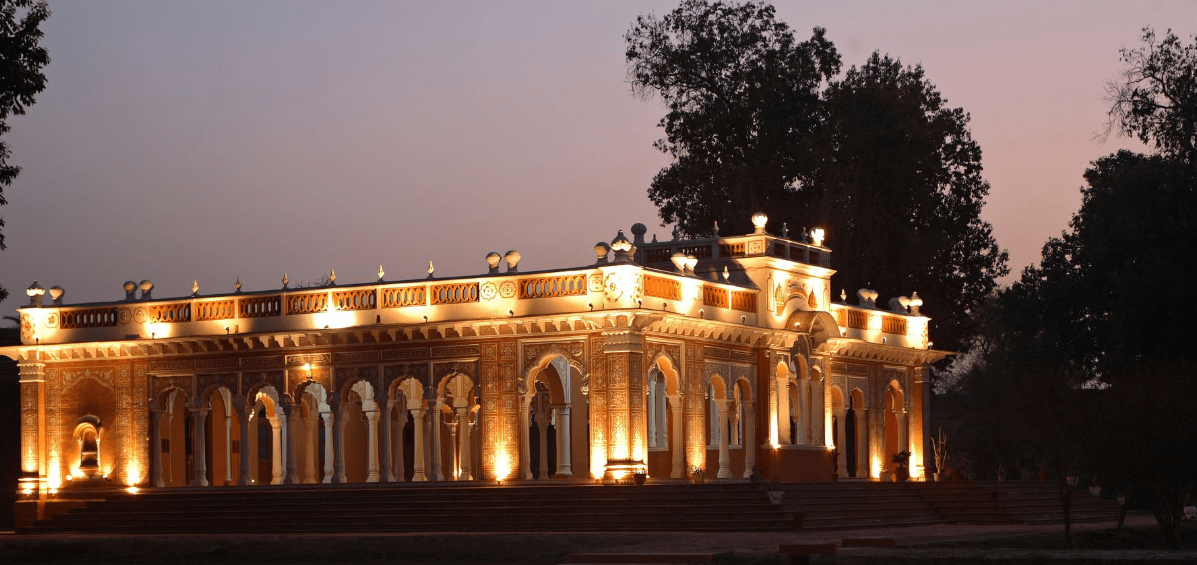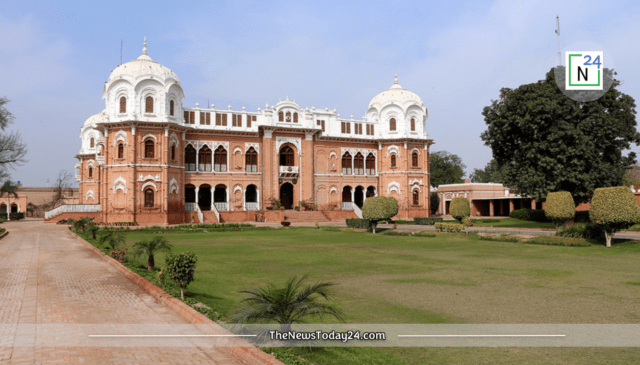The Abbasi family ruled Bahawalpur for almost more than 200 years, contributing significantly to the development of the region known as the “Princely State” through the construction of elegant palaces that still showcase their architectural prowess and aesthetic preferences.
In the Bahawalpur city, there is a palace called Darbar Mahal. The former princely state of Bahawalpur’s government offices and court events were held in the edifice.
In 1905, it was completed and it is one of the time period’s masterpieces, Darbar Mahal, stands towering as a testament to the brilliance and prosperity of the Abbasi emperors.
Initially planned to be the “Bhawal Garh,” it was dedicated to one of the Nawab’s wives. Bahawal Khan V constructed the palace, which was initially known as Mubarak Mahal. The Nishat Mahal, Farrukh Mahal, and Gulzar Mahal are a few palaces of the Bahawalgarh Palace Complex that are close to Darbar Mahal.
The most known of all the palaces in Bahawalpur, Gulzar Palace, Nishat Palace, and Farukh Palace, were among those that Nawab Bahawal Khan (V) approved of building in 1904. Both Darbar Mahal and Gulzar Mahal are examples of stunning structures with an excessive number of entrances.
Along with the Gulzar Palace, the Darbar Palace, which also included Nishat Palace and Farukh Palace, continued to be built. In May, 1904 Newspapers published some advertisements for purchasing palace furniture and other materials. These palaces were built individually for the royal family’s wives.
In a 75 acre garden, the palace is situated. Government and military offices are located throughout the entire palace complex, which the armed forces have occupied since 1966. There is no public access to it.

Bahawalpur is frequently referred to as the “Princely State” in local culture since history demonstrates that it became the Abbasi’s new royal seat and the centre of Abbasi architecture in India after Derawar when a few palaces, including Darbar Mahal, were built there.
After 1947, the Pakistani Armed Forces and the government took over the Mahal, and the tenants gave the Nawab the required dividends. The Regional Court of the State of Bahawalpur has also had its sitting bench at the Mahal.
Nawab Abbas Abbasi used this castle for a very long time. For more than three decades, the Army has been using this mansion as an office.
The palace grounds are covered in lush vegetation and extend over 75 acres, making them one of the largest properties around and providing enough space for a variety of exotic and local flora to thrive. The grounds have fountains and are always kept in immaculate condition.
The son of the Nawab Abbass Abbassi used this palace for a considerable amount of time. These palaces were used as government offices after Pakistan gained its independence, and His Highness was paid the rent.
Architecture
The architecture of the Darbar Mahal, in particular, skillfully incorporated influences from Delhi, the Mughal, the Sikh, and even Europe, according to archaeologists.
It was constructed in a design that blends regional, Arabic, and European influences. Fretwork, stucco, and ornate carvings decorate the exterior. There are substantial entranceways and jharokha balconies on either side of the structure. The third story of the structure has a chattri roof in the Mughal style, with highly stylized octagonal turrets and Sikh-style domes on each of its corners.

It was constructed in the same manner as the earlier Lahore Fort and was made of red brick. The structure consists of four domes that are joined to one another by narrow passageways.
The building is a sophisticated combination of red and white, with white predominating in the roofline and windows and red in the outer walls. With a large building decorated with more than 80 windows that have been designed in the old Islamic traditions of the 14th century, the architectural subject of Ancient Arab and Indian customs is consistent throughout.
Interior
The Darbar Mahal’s interior emits elegance and refinement; the walls have been painted a distinctive pale gold-tan color that draws the eye and gives the spaces a sense of solidity and space.
The building is decorated with priceless paintings from the middle of the 19th century, traditional Indian jewelry and swords, and portraits of some important Nawab family members.
The carpets are equally lavish and fantastic, and the inside has been decorated with stunning furniture that is among the best and most expensive local selections available today. The velvet door curtains are painted a rich crimson color that complements the walls around them and gives the room a more regal appearance.
Ceramic tiles that shimmer in the light of pricey lamps are used to adorn the archways, adding to the Mahal’s majestic appeal. Amazing carpets and furniture are used to embellish the rooms.

Elegant, luxuriant curtains in the colour of maroon cover the doorways. The roofs are mosaic, while the walls are all composed of marble. The palace’s magnificence has been enhanced by the enormous lanterns set throughout.
There is a large gallery adjacent to the main hall that was once utilized as an art gallery with uncommon standards. The walls of this gallery are covered with some rare images of the State of Bahawalpur’s former rulers; however there are no rules in place now.

Some of the most valuable and rare artifacts and family treasures were once displayed in this Gallery, but tragically, they were demolished at the time. After seizing power, the Pakistani Army adorned the area with pictures of the Nawabs and the Bahawalpur State’s rulers.
The Darbar Mahal has a lot of potential to succeed as a tourist attraction because of its ancient architectural style, which is reminiscent of pre-partition India and is rooted in local cultural tradition.

Due to its antiquated architectural style, which is reflective of pre-partition India and is rich in regional cultural history, the Darbar Mahal has a lot of potential to succeed as a tourist destination.
But regrettably, only a small portion of the land is accessible to the general public; the rest is typically only used for galas and other formal events. It is very well maintained by the Army.











